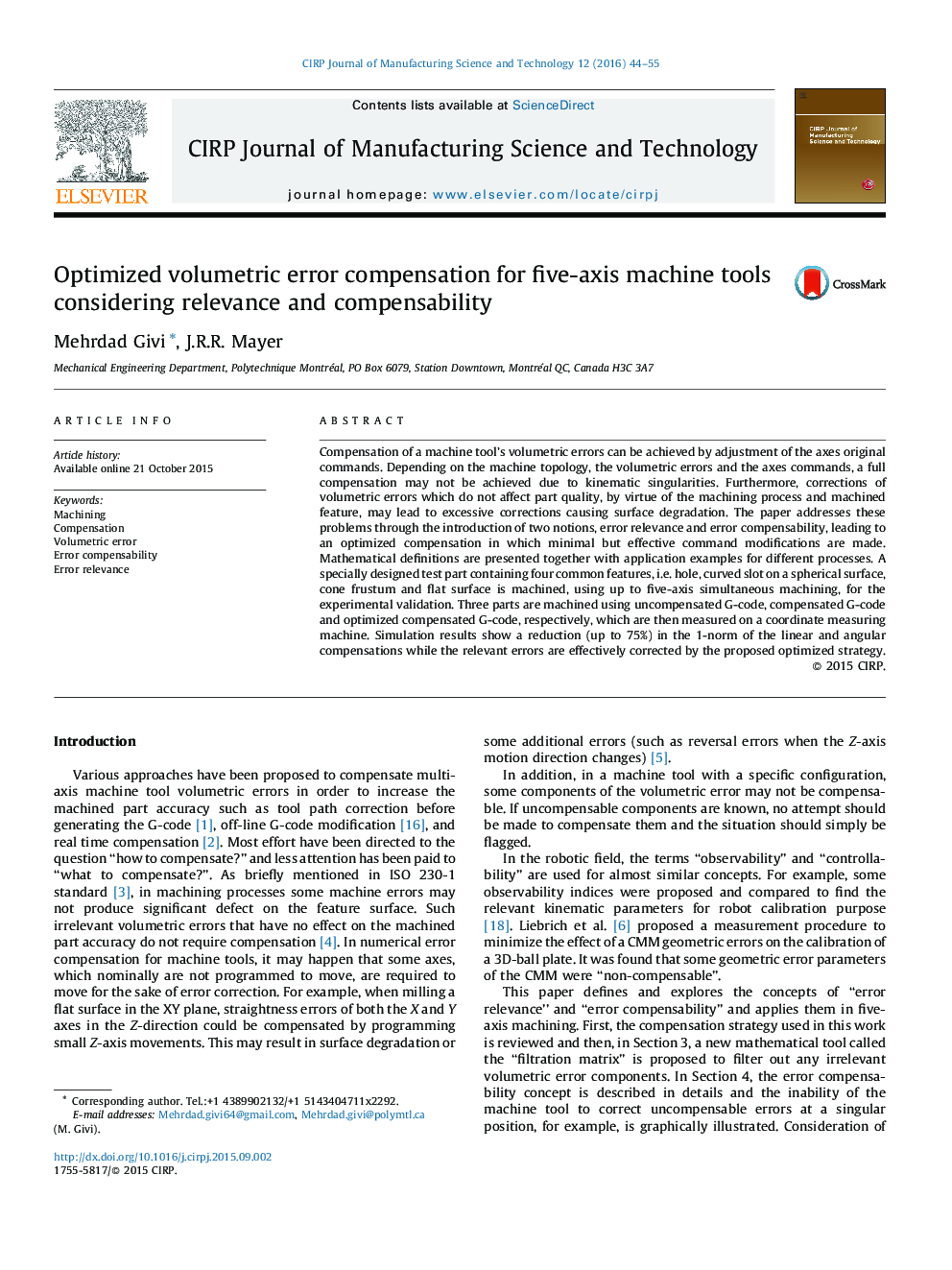| Article ID | Journal | Published Year | Pages | File Type |
|---|---|---|---|---|
| 1679472 | CIRP Journal of Manufacturing Science and Technology | 2016 | 12 Pages |
Abstract
Compensation of a machine tool's volumetric errors can be achieved by adjustment of the axes original commands. Depending on the machine topology, the volumetric errors and the axes commands, a full compensation may not be achieved due to kinematic singularities. Furthermore, corrections of volumetric errors which do not affect part quality, by virtue of the machining process and machined feature, may lead to excessive corrections causing surface degradation. The paper addresses these problems through the introduction of two notions, error relevance and error compensability, leading to an optimized compensation in which minimal but effective command modifications are made. Mathematical definitions are presented together with application examples for different processes. A specially designed test part containing four common features, i.e. hole, curved slot on a spherical surface, cone frustum and flat surface is machined, using up to five-axis simultaneous machining, for the experimental validation. Three parts are machined using uncompensated G-code, compensated G-code and optimized compensated G-code, respectively, which are then measured on a coordinate measuring machine. Simulation results show a reduction (up to 75%) in the 1-norm of the linear and angular compensations while the relevant errors are effectively corrected by the proposed optimized strategy.
Related Topics
Physical Sciences and Engineering
Engineering
Industrial and Manufacturing Engineering
Authors
Mehrdad Givi, J.R.R. Mayer,
